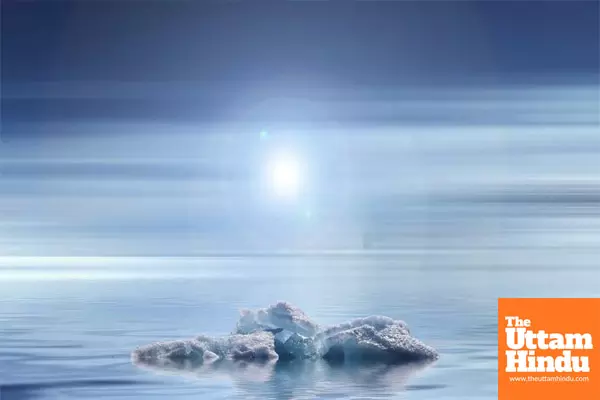
Earth's Tilt and Orbit's Role in Ice Ages: Rising CO2 Could Delay Next Glaciation

New Delhi (The Uttam Hindu): Researchers have discovered that shifts in Earth's tilt and orbit have been pivotal in triggering ice ages over the past 800,000 years. A new study reveals a direct link between these changes and the movements of vast ice sheets, showing that another ice age would have begun within the next 11,000 years, if not for the escalating effects of greenhouse gas emissions. The research highlights the impact of Earth's axial tilt and orbit on long-term climate patterns, revealing a strong correlation between these factors and the growth and retreat of ice sheets.
Earth's Tilt and Wobble's Impact on Climate
The study, published in *Science*, notes that Earth's axis is tilted at an angle of 23.5 degrees, a tilt that fluctuates over a 41,000-year cycle, affecting the solar radiation reaching the poles. Additionally, Earth's precession — the wobble of its axis — influences sunlight intensity in the equatorial regions on a 21,000-year cycle. These variations, according to the study, play a critical role in the timing of ice ages.
Stephen Barker, a Professor of Earth Science at Cardiff University, discussed the remarkable correlation between Earth's obliquity, precession, and ice sheet movements. The study utilized ocean sediment cores, which contain microscopic shells known as forams, to track the historical extent of ice sheet coverage and climate change.
Human Impact on Future Glaciation
Based on natural climate cycles, researchers estimate that, in the absence of human activity, ice sheets would begin expanding in the next 10,000 to 11,000 years, reaching their peak in 80,000 to 90,000 years before gradually retreating. However, increasing carbon dioxide levels are disrupting these natural cycles. Barker emphasized that sustained high CO2 concentrations would prevent the onset of a new glacial period.
These findings expand our understanding of Earth's long-term climate shifts and underscore the significant influence of human activity on natural processes. Researchers stress the importance of studying past climate patterns to accurately assess future climate projections.

